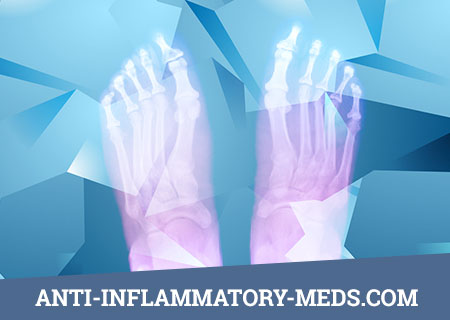Dosage and administration: which dosage form to choose?
The undoubted advantage of diclofenac is the variety of dosage forms, including tablets (quick and retarding action), solution for parenteral administration, suppositories, as well as forms used for local therapy: ointments, creams, gels, spray, which creates convenience in the selection of individual dose and method use of the drug in different patients. The ability to combine different routes of administration in the same patient reduces the risk of adverse reactions.
Diclofenac tablets
Diclofenac tablets are available in various dosages. The dose and method of administration of the drug for each patient is set individually, taking into account the severity of the disease. The average recommended dose for adults is 100-150 mg / day. The maximum daily dose of diclofenac is 200 mg. In relatively mild cases of the disease, as well as for long-term therapy, a daily dose of 75-100 mg is sufficient. The daily dose should be divided into several single doses. If necessary, to influence night pain or morning stiffness in addition to taking the drug during the day, you can assign diclofenac in the form of candles before going to bed; at the same time the daily dose should not exceed 150 mg. Upon reaching the clinical effect, the dose is reduced to the minimum, supporting.

Children aged 6 to 15 years (inclusive) are prescribed only 25 mg tablets. The daily dose is 0.5–2 mg / kg of body weight (in 2–3 doses, depending on the severity of the disease).
Adolescents aged 16 to 18 years, you can assign tablets of 50 mg. Tablets should be washed down with a large amount of liquid, preferably before meals. Tablets can not be divided or chewed.
Diclofenac in the form of slow-release tablets
A special form of the drug is diclofenac in the form of tablets with prolonged action. As a result of the slow release of the active substance when taking retardirovannyh forms of diclofenac sodium, the effect comes later, but lasts longer. These features of pharmacokinetics make it possible to achieve a reduction in the number of drug intakes by patients (1–2 times a day instead of 3–4 times a day) while maintaining a stable high concentration of the drug in the focus of inflammation. This makes it preferable to use diclofenac in retard form, if necessary, long-term use of the drug (for chronic pain syndromes, mainly in rheumatological practice).
The recommended initial dose for adults is 75 mg, that is, 1 retard tablet per day. The same dose is used in relatively mild cases of the disease, as well as for long-term therapy. In cases where the symptoms of the disease are most pronounced at night or in the morning, it is desirable to prescribe retard tablets at night.
Tablets should be swallowed whole, preferably with meals. If you need to increase the dose, use an additional 1-2 tablets of diclofenac, 25 mg each. The maximum daily dose is 200 mg.
Sandoz, a Swiss pharmaceutical company, currently produces 75 mg bilayer tablets, the uniqueness of which is that each tablet consists of two layers and includes 12.5 mg of diclofenac sodium of immediate release and 62.5 mg of diclofenac sodium of slow release, which provides both rapid onset of action, and prolonged action of the drug.
Children and adolescents up to 18 years should not be prescribed retard tablets.
Diclofenac in the form of rectal suppositories
Diclofenac dosage form in the form of suppositories has several advantages. Candles do not cause those complications that are possible with parenteral administration of drugs (the development of muscle necrosis, infiltrates and suppurations at the injection site). It is advisable to prescribe suppositories if it is impossible to take drugs by mouth (in debilitated patients, in the presence of esophageal strictures, etc.). When taken per os, there is a direct damaging effect of diclofenac on the cells of the gastric mucosa. With other methods of drug administration (suppositories, ointments), the risk of damage to the gastrointestinal tract remains, but it is significantly lower. That is why, in the presence of signs of lesions of the stomach and duodenum, preference is given to candle forms of diclofenac.
Very often suppositories are used in combination therapy: during the day, the patient receives either injections or tablets, and at night - candles, which creates the best therapeutic effect due to a more uniform and long-lasting maintenance of the drug concentration in the blood. In this case, the total daily dose of diclofenac should not exceed 150 mg.
For children aged 6 to 15 years (inclusive), only suppositories of 25 mg should be prescribed. The daily dose is 0.5–2 mg / kg body weight (the daily dose, depending on the severity of the disease, should be divided into 2-3 single doses). For the treatment of RA, the daily dose may be increased to a maximum of 3 mg / kg (in several injections). Adolescents aged 16 to 18 years old can also be given suppositories of 50 mg.
The suppository is introduced into the rectum, if possible deeply, preferably after pre-cleansing the intestine. Suppositories should not be cut into pieces, since such a change in the storage conditions of the drug may further lead to a violation of the distribution of diclofenac.
Diclofenac in the form of a solution for injection
Diclofenac in the form of injections is preferably used when a faster analgesic effect is required, usually with more severe acute pain (with renal or hepatic colic, with acute pain associated with soft tissue injuries (contusion, stretching), with acute back pain, postoperative pain Usually, it is prescribed 1 ampoule per day, however, in severe cases, you can prescribe 2 injections per day with an interval of several hours, changing the direction of administration. The use of injections can be combined with other dosage forms of diclofenac. the longevity of parenteral administration should not exceed two days, if necessary, continue treatment with the same diclofenac, but in the form of tablets or rectal suppositories.With intramuscular use, the drug is injected deep into the upper outer quadrant of the buttock; In renal and hepatic colic, administration of diclofenac is usually combined with the use of antispasmodics. With a pronounced muscular component of back pain, administration of diclofenac is combined with the use of miorelaxin. Comrade
A combination of two or more NSAIDs should be avoided, since their effectiveness remains unchanged and the risk of side effects increases.
Diclofenac in the form of means for external (local) use
The undesirable effect of NSAIDs on the body is sharply limited if they are used in the form of local applications. Dosage form for such therapy is a mixture of the active drug with a base that provides absorption under the skin. This method of treatment allows you to enter the drug directly into the lesion. At the same time, the impact on other organs and tissues is minimal.
Abroad there are dosage forms in the form of plates for adhesion to the skin, containing 1.3% diclofenac epolamine. For the first time, diclofenac in the form of plates appeared in Switzerland in 1993, currently diclofenac in the form of plates is registered in 43 countries of the world. Diclofenac plates are intended primarily for those who cannot take oral diclofenac form due to contraindications. They are used in case of damage to soft tissues (contusion, stretching, compression, osteoarthrosis) provided that the integrity of the skin is preserved 2 times a day. Plates are convenient for use, but are more expensive than other dosage forms.
These drugs are convenient for use and easily dispensed. After applying the drug to the skin, the active compound accumulates in regional soft tissues and no more than 6% of the active substance enters the bloodstream. The content of the drug in the muscles in the area of application is approximately three times its level in the distant muscle tissue. This makes the use of diclofenac gel forms preferable for a wide range of musculoskeletal disorders. Gel forms of diclofenac are non-prescription drugs and are very popular.

Diclak Gel is the only diclofenac product on the Russian market with a 5% maximum concentration of the active substance, which makes it possible to reduce the dosage of the drug, taken orally and, in some cases, completely replace the tablets. Approved for use by children from 6 years.
Diclofenac in the composition of the combined drugs for the treatment of pain
There are also dosage forms (ointments, gels) in which diclofenac is one of the main components. The combination of several drugs with different mechanisms of action improves the effectiveness of treatment.
Security
Diclofenac has an optimal combination of analgesic and anti-inflammatory effects and good tolerability. Therefore, in the absence of contraindications can be applied even for a long time. Studies have confirmed that treatment with diclofenac in fairly high doses (150 mg) with long-term use (up to 8 months or more) was well tolerated by patients. Of course, diclofenac, like any NSAIDs, may have side effects and contraindications. However, it should be noted that side effects, among which, in the first place, ulceration of the gastrointestinal mucosa (GIT) should be feared, develop more often in people with risk factors.
The risk factors for gastrointestinal lesions include:
- age over 65;
- a history of peptic ulcer disease;
- food intake that increases gastric secretion (spicy, fatty, salty foods);
- large doses or simultaneous administration of several NSAIDs;
- concomitant glucocorticoid therapy;
- the female sex, since women are more sensitive to this group of drugs;
- smoking;
- alcohol intake;
- presence of Helicobacter pylori.
In this regard, treatment should begin with the lowest recommended dose, especially in risk groups. In persons at risk, the daily dose of diclofenac should not exceed 100 mg, preference should be given to short-lived dosage forms of diclofenac and prescribe it either 50 mg 2 times a day or 25 mg 4 times a day. Diclofenac should be taken after meals. With long-term use of the drug should refrain from alcohol, since diclofenac, like alcohol, is metabolized in the liver. If complaints arise from the gastrointestinal tract, esophagogastroduodenoscopy (EGDS) should be carried out, and for systematic administration of diclofenac, this procedure should be prescribed every 4-6 months, since NSAID gastropathy is often asymptomatic - "dumb."
If necessary, long-term use of diclofenac, which is especially important in rheumatology, it is advisable to prescribe diclofenac along with misoprostol, which protects the gastric mucosa from damage.
In patients with hypertension, it is necessary to control the level of blood pressure, in patients with bronchial asthma while receiving diclofenac exacerbation may be observed. In patients with chronic liver and kidney diseases, small doses of the drug should be used, controlling the level of liver enzymes.
Before prescribing diclofenac, the doctor needs to clarify whether the patient is taking any other medications due to concomitant diseases in order to avoid possible complications when using diclofenac in combination with other medicines. It is known that diclofenac increases the plasma concentration of digoxin, lithium, cyclosporin A, including increases its nephrotoxicity; enhances the toxicity of methotrexate. Against the background of potassium-sparing diuretics, diclofenac increases the risk of hyperkalemia, and against the background of anticoagulants the risk of bleeding. Diclofenac reduces the effect of diuretics, antihypertensives and hypnotics. The simultaneous use of antidiabetic agents can lead to both hypokalemia and hyperkalemia.
After the introduction of diclofenac into clinical practice more than 30 years have passed. During this time, many new NSAIDs have appeared. This greatly expanded the possibilities of providing effective care to patients, since the individual response to treatment is very variable. However, diclofenac occupies a special place in this medical arsenal. The combination of high efficiency, good tolerability and a variety of dosage forms of the drug allow you to choose the optimal therapy for a wide range of pain syndromes.
 US
US AU
AU CA
CA DE
DE FR
FR IT
IT ES
ES




